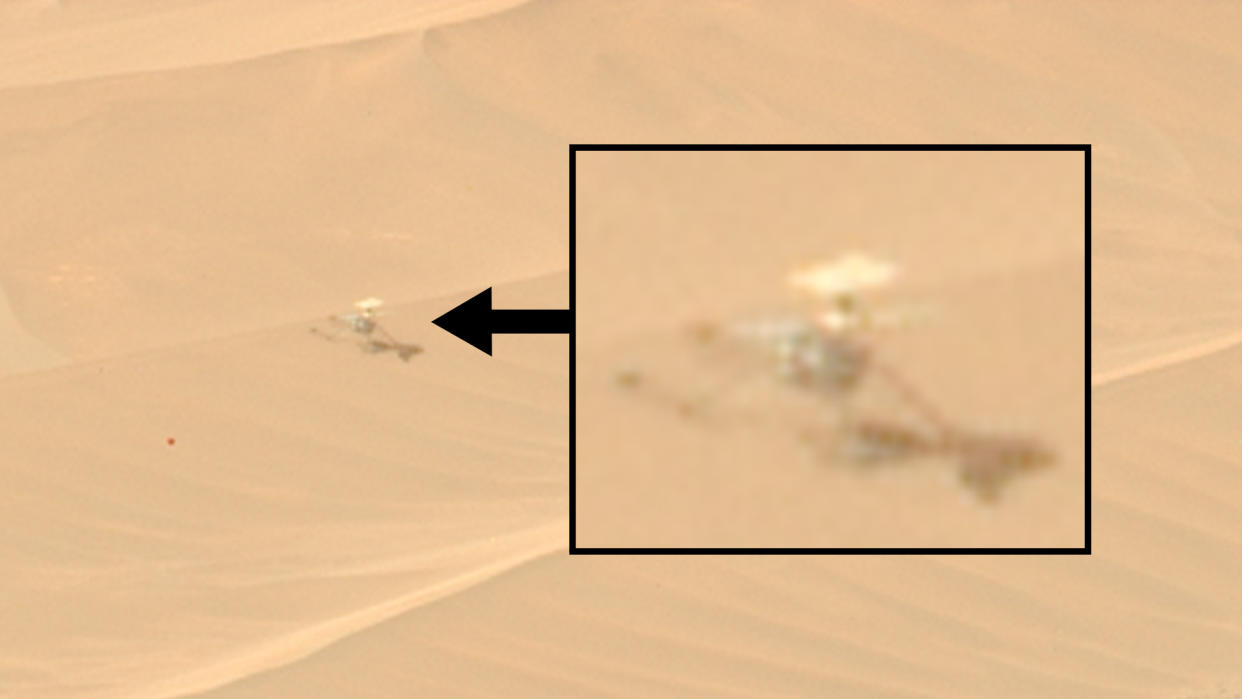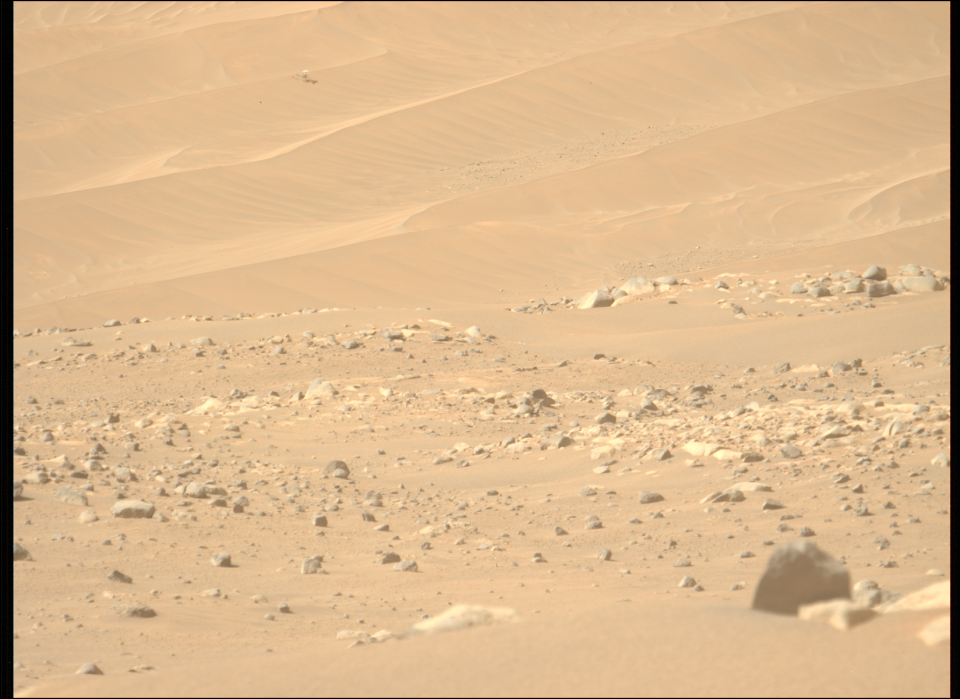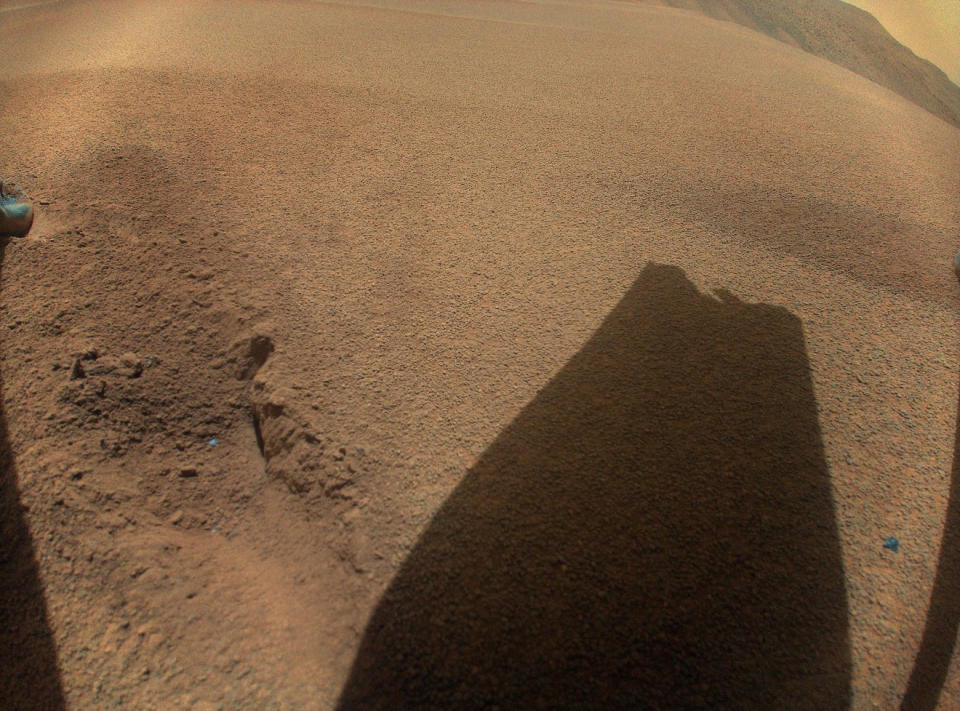NASA Ingenuity Mars helicopter, broken and alone, spotted by Perseverance rover on Martian dune (photo, video)

NASA's Perseverance Rover took a photo of its broken companion, the Ingenuity helicopter, as it sat alone on a dune.
In this most recent photo of Ingenuity, the dual-rotor 'copter can be seen motionless on a sandy dune in the background, as a barren, rocky Mars landscape fills the foreground.
The photo was taken on Feb. 4, 2024, at 1:05 p.m. local mean solar time, a little over two weeks since it suffered its mission-ending damage.
Related: NASA to 'wiggle' broken Ingenuity Mars helicopter's blades to analyze damage

Ingenuity suffered damage to its rotors during a flight on Jan. 18 as it made a landing on a featureless, "bland" patch of sandy Martian landscape. The helicopter usually makes use of landscape features such as rocks to help it navigate, but its 72nd flight found the drone without visual cues.
The Jet Propulsion Laboratory (JPL) is still analyzing the damage to Ingenuity's blades, but regardless of what JPL finds, the helicopter's mission has officially come to an end now that it's no longer capable of flight.
Ingenuity landed alongside its robotic companion, the Perseverance rover, on Feb. 18, 2021. When it took to the Martian skies in April 2021, Ingenuity made history by conducting the first flight of a powered aircraft on another planet.
The Ingenuity-Perseverance duo has been exploring an area known as Jezero Crater ever since, discovering signs of ancient bodies of water on the Red Planet that may have once harbored life billions of years ago. Ingenuity served as a scout for Perseverance, identifying areas of interest for the rover to explore.

In recent weeks as NASA and JPL have been coming to terms with the end of Ingenuity's groundbreaking mission, agency leaders have praised the helicopter and the teams behind it.
"We couldn't be prouder or happier with how our little baby has done," said Teddy Tzanetos, Ingenuity Project Manager at JPL, during a livestreamed tribute to the helicopter on Jan. 31. "It's been the mission of a lifetime for all of us. And I wanted to say thank you to all of the people here that gave their weekends, their late nights. All the engineers, the aerodynamic scientists, the technicians who hand-crafted this aircraft."

RELATED STORIES:
— NASA's Mars helicopter Ingenuity takes off on historic 1st powered flight on another world
— Nuclear-powered Dragonfly mission to Saturn moon Titan delayed until 2028, NASA says
Tiffany Morgan, NASA's Mars Exploration Program Deputy Director, added that Ingenuity leaves behind a legacy that could pave the way for future aerial missions on other worlds.
"The NASA JPL team didn't just demonstrate the technology, they demonstrated an approach that if we use in the future will really help us to explore other planets and be as awe-inspiring, as amazing, as Ingenuity has been," Morgan said during the livestream.
NASA is already developing another drone destined for another world, the nuclear-powered Dragonfly, to someday explore Saturn's largest moon, Titan. The agency expects Dragonfly to launch no earlier than 2028.

